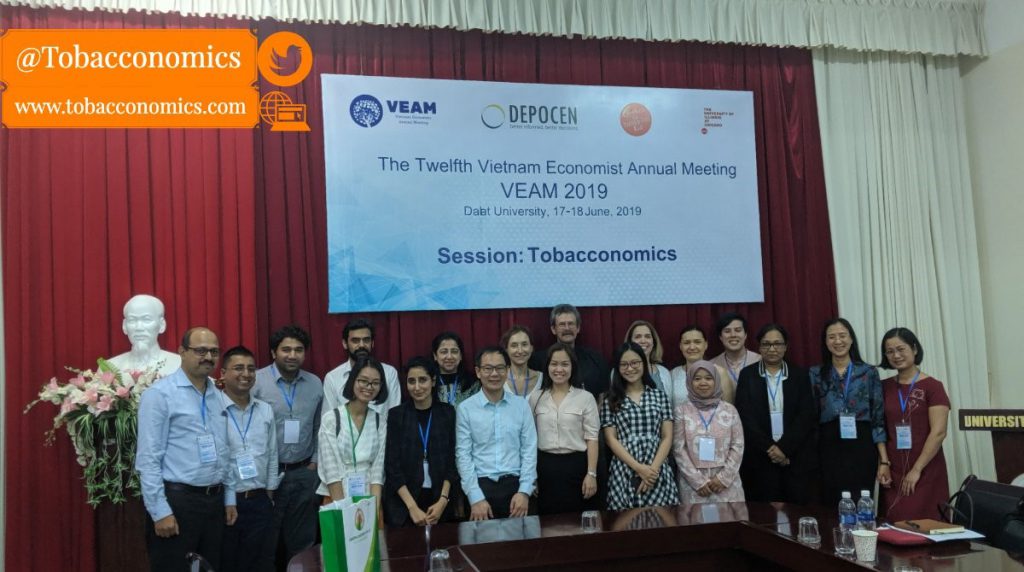Tobacco Economics Research Run Down at Vietnam Economics Annual Meeting
Some of the best moments of our work are those where we have the opportunity to meet with our partners face-to-face and see them present their research to a broader audience. A few weeks ago at the 11th Vietnam Economists Annual Meeting (VEAM)—hosted by our partner in Vietnam, DEPOCEN—we were able to do just that.
The conference was jam-packed with productive discussions not only on tobacco, but also environment, trade, sustainable development, and alcohol taxation, just to name a few. During the sessions on tobacco, research presentations were delivered by our partners—DEPOCEN, and the Institute for Public Policy Management (IPPM) at the National Economics University of Vietnam. In addition, other Tobacconomics partners from Pakistan presented their research findings.
Some notable highlights—Nguyen Ngoc Minh from DEPOCEN discussed her research on the crowding-out effects of tobacco expenditure in Vietnam, and their analysis was developed using the methodology from our recently released Tobacconomics Toolkit on Using Household Expenditure Surveys.
Rijo John, an India-based Tobacconomics consultant and global expert in tobacco economics, shared his research on the economic costs of diseases and deaths attributable to bidi smoking in India in 2017. According to John, “85% of smoking in India is from smoking bidis…the total economic cost from bidi smoking is about 12.5 billion USD, while excise tax revenues from bidis is only about 60 million USD.” Meanwhile, bidis are very cheap in India, costing only about Rs 4 on average. Additionally, taxes comprise only around 9% of the retail price. John’s research identifies an important area where policy intervention is necessary to curb the staggering costs of tobacco use—especially bidis—in India.
Muhammad Nasir from the Pakistan Institute for Development Economics (PIDE) presented the findings from their most recent report on behavioral responses to tobacco taxation. The research found that reverting back to a two-tiered tax structure, if set at 2017 rates, would lead to increased revenue, and recommended that the funds be earmarked for improving healthcare programs.
The Social Policy and Development Centre’s (SPCD) report also showed that the data directly contradicts the tobacco industry’s argument that it contributes significantly to the economy of Pakistan. According to the report, tobacco represents only 0.42% of the total value of crop sector, and only 0.03% of agricultural employment. Additionally, the share of cigarette production in industrial output is only 1.1%.
It’s noteworthy that a few months after the release of the PIDE & SPDC reports, further consultations with the government, along with the concerted efforts of the tobacco control community, the government reverted to the two-tiered structure. Although the impacts have yet to be measured, this move is a step in the right direction and evidence of solid research informing better tobacco tax policies in Pakistan.
Immediately following VEAM, we had the opportunity to host our 2nd annual UIC Asia Partners Meeting. Stay tuned next week for another blog post, where we will be discussing more details about the meeting and a few exciting announcements!

